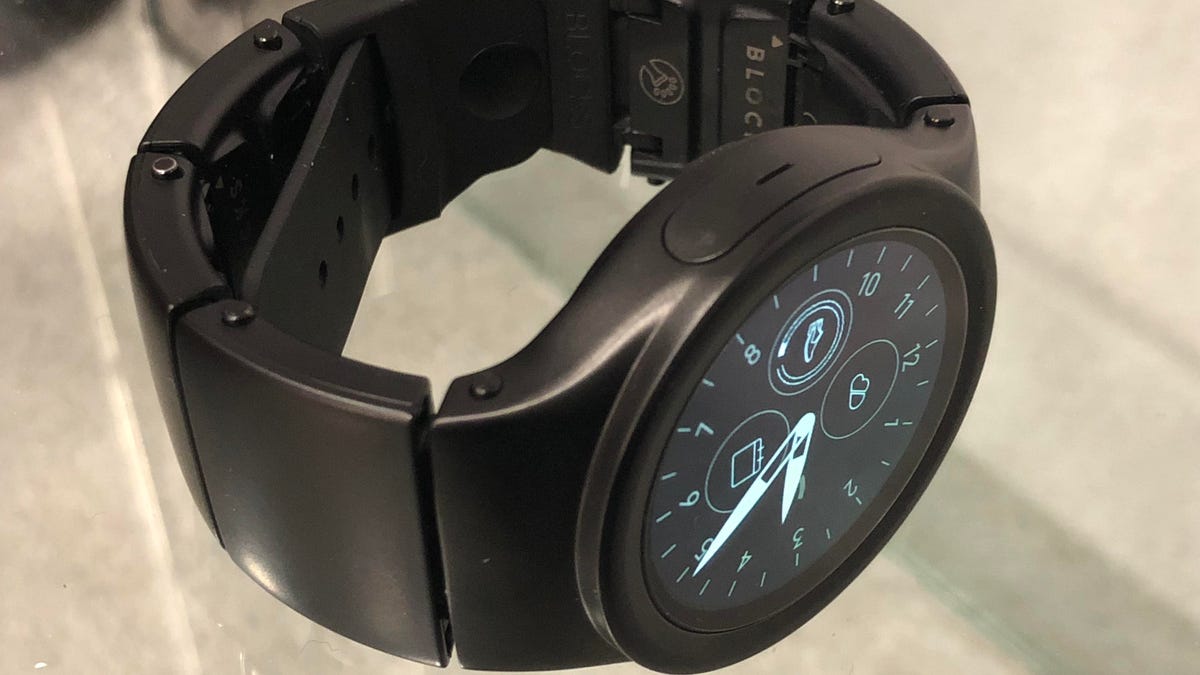Blocks modular smartwatch snaps on Android Oreo and Alexa
Blocks is still dreaming of a modular smartwatch, but not for the reasons you think.

Will Blocks make its module idea work for wearable developers looking to explore new sensors?
Why would anyone want a modular smartwatch? Well, maybe the better question is: Who could use a modular smartwatch? A concept kicking around for years has enterprise and developers in its sights. And maybe that's where this idea could work.
Blocks , a gadget concept, has been crowdfunding and pitching its idea for years. The watch is like one of those CES ideas straight out of Central Casting. It's a smartwatch that has novelty snap-on modules adding new features. Sounds intriguing, but why would you want to bother?
The Blocks modules snap together on the band.
The newest version of the watch is here at CES, and I've seen it, worn it, and spoken to its founder, Serge Vasylechko, and Karl Taylor, head of engineering. Its laundry list of features is somewhat crazy: It runs Android Oreo 8.0, and has modules galore, including one with onboard Amazon Alexa for on-wrist AI (which Amazon is making easier with new hook-ins). It can pair with Android phones and iPhones , and works with a long list of snap-on upgrades that attach via link-like segments on the band.
- An "environment" block with temperature, humidity, air pressure and altitude sensors
- Torch, an LED flashlight and extra notification indicator
- Smart Button, an extra customizable touch sensor/launcher
- GPS, which adds GPS/GLONASS
- Heart Rate, which has optical heart rate
That's a lot of modules.
The first version of Blocks was developed a year ago, and the most recent version uses a faster MediaTek processor to run a newer version of Android... and work with more sensors and module add-ons.
Many of these extra features sound like ones I'd expect on a smartwatch in the first place. Others feel like novelties. But then again, that's the idea. In fact, I realized the whole idea of Blocks is to be a development platform for other wearable researchers and designers who want to try new sensors without investing in a watch.
According to Vasylechko and Taylor, some use cases could be for factory workers or enterprise, testing new chemical sensors or biometrics. Untested health sensors could be tested. Or, other power sources (the links or blocks can pass power to the watch, or run from the watch to the links). More modules are planned: ones to measure air quality, stress/perspiration, body temperature, NFC and UV sensors and connections. And then there other use-case promises: maybe gesture control, biometrics or even blood pressure monitoring.
Do I sound skeptical? I haven't worn the watch for more than a few seconds. I've seen plenty of companies (Pebble, cough) die by the wayside with promises of modular extras. Maybe Blocks will crack the code. But at $259 for a preorder of the Blocks Core watch and $140 for a pack of four modules, it's not a crazy price for someone who wanted to tinker.
I was ready to write off Blocks, but when I spoke with Vasylechko and Taylor and realized they seemed to be targeting researchers and enterprise more than everyday people, my opinion changed. It's not a crazy idea. In fact, as new sensors in health-tech face greater hurdles to attain FDA approval, I wonder if something like Blocks -- provided it was really open and easy to design for -- is the open, flexible idea that wearable tech needs right now.
The 2016 teaser of Blocks is below. The general idea remains the same.
PC preview: What to expect from laptops, desktops and tablets at CES this year.
CES 2018: CNET's complete coverage of tech's biggest show.

